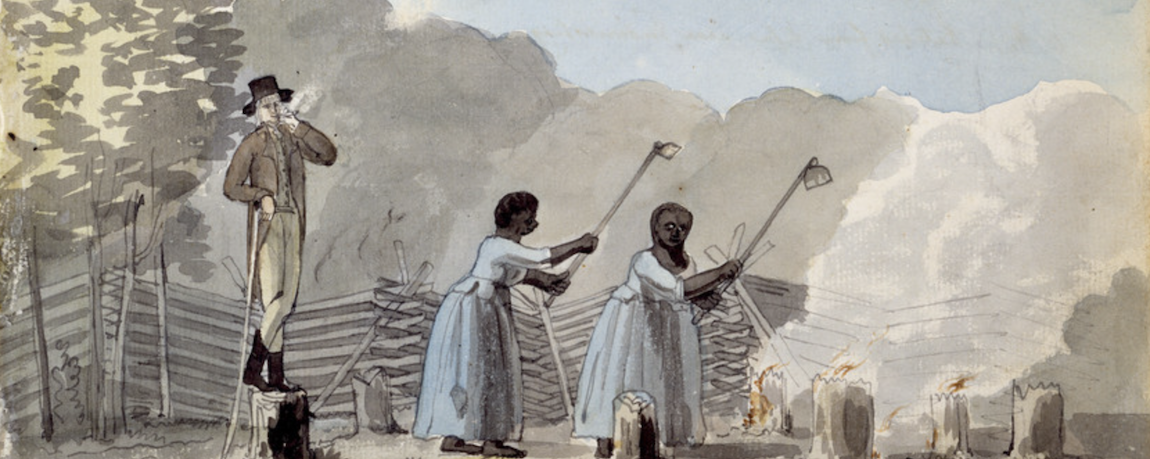Advertisement
This article provides a brief overview of the similarities and differences between enslaved people and indentured servants.

An Overseer Doing his Duty (1798) Benjamin Henry Latrobe
Introduction
The labor force of Colonial America was shaped by two distinct yet intertwined forms of bondage: slavery and indentured servitude. While both systems involved laborers working under harsh conditions for little to no pay, there were fundamental differences in their legal status, treatment, and prospects for freedom.
Origins and Legal Status
The institution of slavery in colonial America was firmly rooted in race-based slavery, where individuals were considered property and their enslavement was hereditary. Slavery primarily targeted Africans, who were forcibly transported to the colonies and subjected to lifelong servitude. In contrast, indentured servitude emerged as a contractual arrangement, typically involving Europeans who voluntarily agreed to work for a set period (usually five to seven years) in exchange for passage to the New World or other benefits.
Conditions of Labor
Both slaves and indentured servants faced grueling conditions and brutal treatment at the hands of their masters. Slaves endured a lifetime of bondage, forced labor, and dehumanization, with little hope of ever attaining freedom or autonomy. Indentured servants, while technically free after completing their term of service, often faced harsh treatment, exploitation, and limited opportunities for advancement in colonial society.
Legal Protections and Rights
Slaves were denied basic legal rights and protections, treated as property rather than as human beings. They had no recourse to the law and could be bought, sold, or traded at their master's discretion. In contrast, indentured servants were entitled to certain legal rights and protections under their contracts, although these were often flouted or ignored by unscrupulous masters.
Prospects for Freedom
One of the starkest differences between slaves and indentured servants lay in their prospects for freedom and social mobility. For slaves, freedom was a distant and elusive dream, with only a small minority ever gaining emancipation through manumission, escape, or legal action. In contrast, indentured servants had the potential to obtain their freedom after fulfilling their contractual obligations, although many faced additional challenges in establishing themselves as free individuals in colonial society.
Related activities
Advertisement

